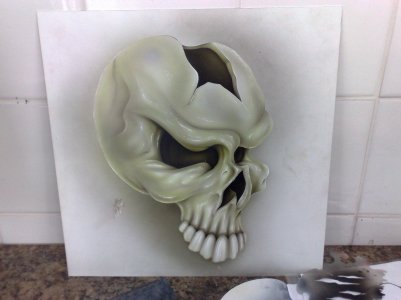Frisket is a great tool, but it takes some practice and skill to really get used to working with. For true fire and stuff like that, you have other options (I'd just use a freehand shield, personally). But good luck getting a portrait to look decent without frisket.
Part of the problem is that the frisket available now (in the US, at least) sucks. ALL of the brands that sell frisket (Badger, Graphix, Artool, etc) all buy from one manufacturer and put it in their own packaging. A while back, that manufacturer decided to use a different formula for the adhesive, and it sucked. They refused to correct the problem until that batch had been used up, leaving us airbrush artists with years worth of less-than-stellar frisket to burn through.
That Crescent discontinued the one good illustration board available doesn't help anything, either. Most of the other stuff I've tried has been varying degrees of terrible at best. Letramax 4000 is the best I've been able to find lately, when I've been able to find it.
But, we can adapt and overcome.

. I de-tack my frisket by sticking in on the skin on the inside of my forearm before applying it to the surface, which (usually) helps with the frisket pulling up paint or tearing up the paper. If the paper sucks, though, there aren't many options (taking up origami, maybe?)
Waaaay back in the old days, when airbrushes were used mainly for photo retouching, and a deep cut meant permanent, unfixable damage, they had an interesting way of practicing cutting the frisket without damaging the substrate. They'd blow up balloons, apply the frisket, and practice, very carefully, cutting the frisket without popping the balloon. I don't think I'm quite THAT skilled, but it's one way to work on your blade control ;-)

